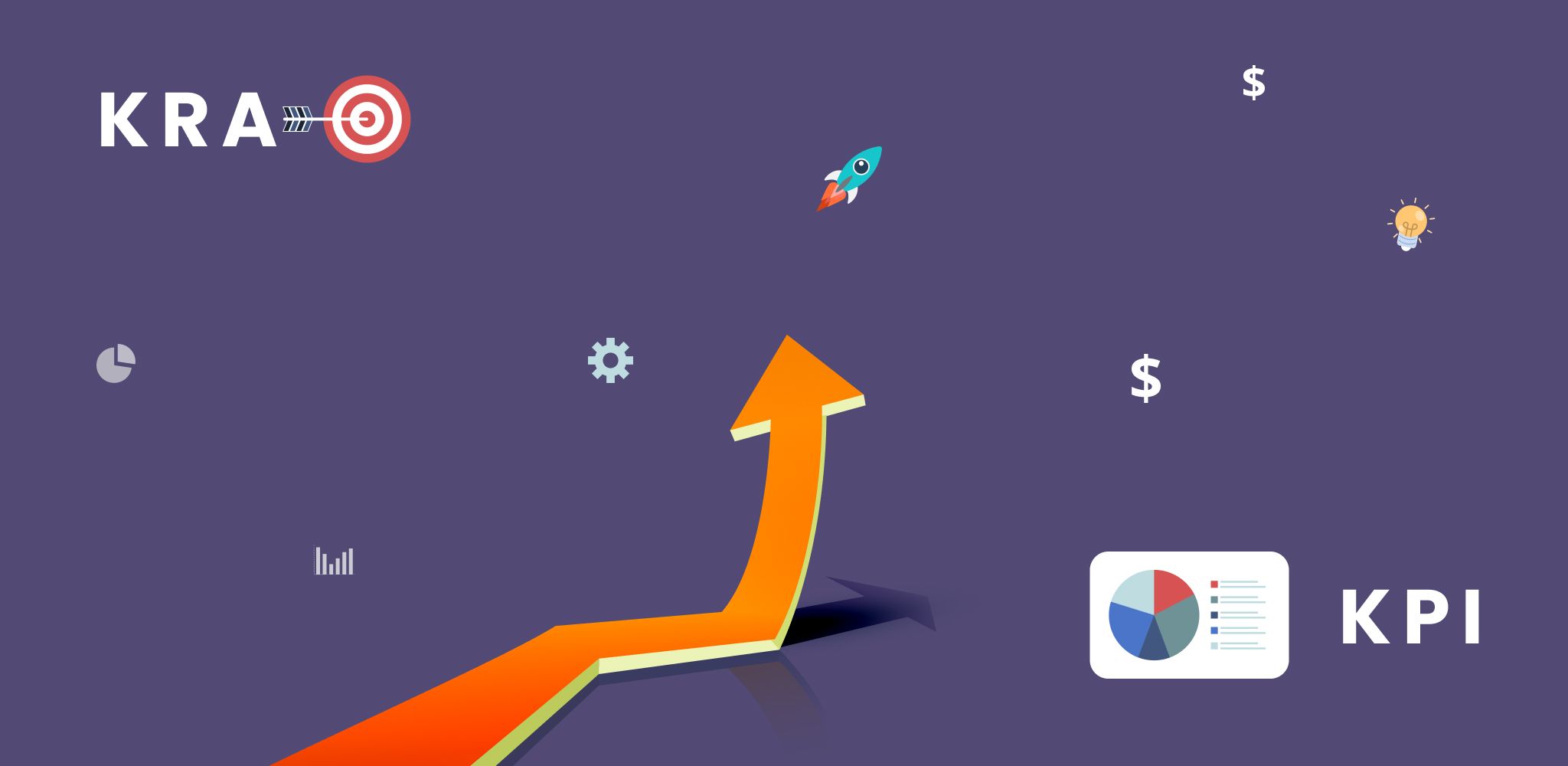Key Result Areas (KRA) and Key Performance Indicators (KPI) help companies set goals for their employees and measure performance based on those objectives.
Successful companies split the overall organization’s goals into various KRAs. KPIs are then created and mapped against the KRAs.
Management needs both KRA and KPI for a fair evaluation of their employee’s work. A successful KRA & KPI framework also helps an employee understand where their work and performance fit into the overall scheme of things in the organization.
What is KPI?
Key Performance Indicators (KPI) are metrics used by organizations to measure their employees’ efforts and suggest improvements. Every company gives their employee a fixed number of tasks at the beginning of their evaluation period. It is essential to evaluate their performance against those duties during or after the completion of that period. It also helps the management understand their employees’ contribution to overall organizational goals and suggest course correction if needed.
Types of key performance indicators for organizations
Companies used different types of KPIs to evaluate their own performance. These organizational KPIs are shared both with internal and external (Example: Shareholders) stakeholders. Examples of Organizational KPIs could be financial metrics like profit and loss, revenues, cost, or sales volume. It could also be based on customer-centric issues like Customer lifetime value, satisfaction, and retention or customer feedback. Product/service issues like quality concerns, customer feedback on changes in product/ service, or Human Resource indicators like employee satisfaction and productivity, employee turnover, etc. are also important KPI metrics for companies.
Types of key performance indicators for employees
The KPIs for employees depends on – their job role and the department to which they belong. Eventually, the growth of an employee depends on both fulfillment of department goals and scores against individual KPIs. A KPI-based evaluation framework helps companies reward top performers and also provide meaningful feedback.
Revenue growth
Revenue growth is a KPI that monitors the performance of sales over a period of time. It is an important metric to calculate and measure profitability which is the barometer of success of a business. It helps to know the negative growth that may require immediate action.
Income sources
The income source metric is a KPI that helps to know the sources of revenue and the performance of each revenue source. Companies can use this metric to calculate revenue generated per client or on every product sold to get a clearer picture of the company’s growth trajectory.
Profitability over time
It is the most critical KPI as it helps the company to track income and expenses that can be compiled to know the profit or loss the company may have incurred. It helps in analyzing the business over a period of time. It helps to know areas where expenses can be reduced. This helps in eliminating unnecessary expenses.
Working capital
Working capital is the day-to-day fund needed to run the business operations in the company. It is another important metric because it ensures that the organization has enough funds to carry out all essential activities.
What is KRA?
Key Result Areas (KRA) are a set of goals and objectives that each organization assigns for their employees at the beginning of their evaluation period. They are expected to perform a fixed number of tasks based on which their performance evaluation is conducted. An employee’s KRAs depend on their department and functional role. They also help employees direct their efforts solely towards achieving predetermined goals while also helping the company fulfill its business objectives.
Difference between KRA and KPI
The key differences between KPI and KRA are:
Though both KPI and KRA are interdependent on each other yet they are different from each other.
- Key result areas are the crucial and important areas of business that require favorable outcomes to achieve a company’s goals. These areas of business require excellent performance. On the other hand, KPI or Key Performance Indicator is a financial or non-financial metric that measures progress at different levels to check how effectively the firm is performing.
- KRA is a strategic factor that requires a lot of effort to achieve the desired goals. KPI is a metric that calculates the level to which business goals are achieved.
- KPIs are quantitative and can be easily measured. A KPI calculates the performance of the product, service, or the business in the market. KRA however, is qualitative and subjective. It determines the areas that may help in achieving high value for the organization.
- KRA helps in finding out the scope of a particular product, service or a unit. On the contrary, KPI helps in measuring the progress of an.
Few examples of KRA and KPI
The following examples will help showcase the usefulness of KRA vs. KPI:
- Suppose a company is hiring 30 sales representatives in a year. The KRA would focus on their recruitment and training, while the KPI would look at the Return on Investment (ROI) per employee for the organization.
- The management introduces an employee feedback program. The KRA will look after addressing employee grievances, while KPI will evaluate the effectiveness of the feedback program.
Frequently asked questions (FAQ)
KRA (Key Responsibility Areas) is a set of goals and objectives that needs to be accomplished for a job. KPI (Key Performance Areas) are the criteria by which the accomplishment of KRAs is measured.
Suppose a company is hiring 30 sales representatives in a year. The KRA would focus on their recruitment and training, while the KPI would look at the Return on Investment (ROI) per employee for the organization.
KRA helps outline the company’s overall scope and product/service, while KPI measures the success against organizational and individual goals.
Employee Key Performance Indicators (KPI) are metrics used by organizations to measure their employees’ efforts and suggest improvements. Employee Key Result Areas (KRA) are a set of goals and objectives that each organization assigns for their employees at the beginning of their evaluation period.


